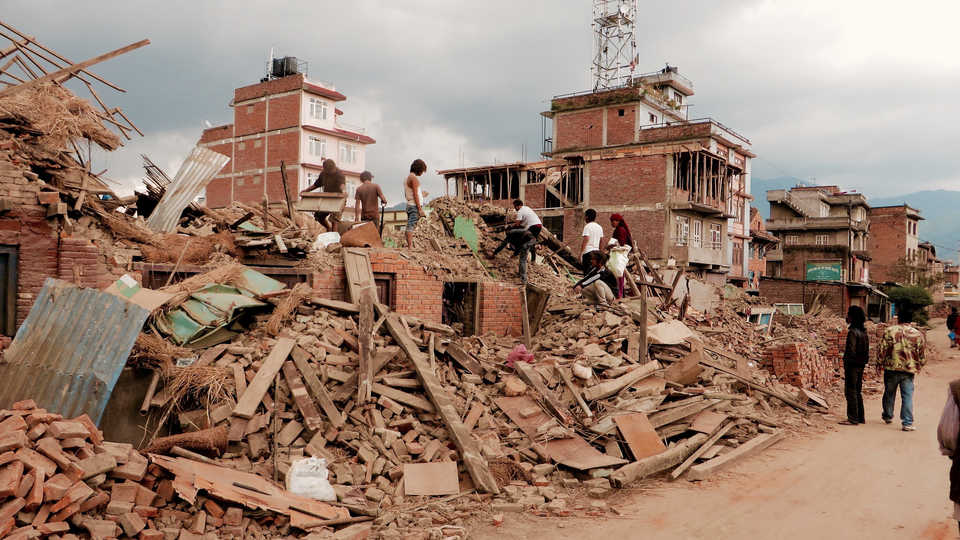Science News
More Shaking to Come

The devastating earthquake that hit Nepal last spring wasn’t entirely unexpected. When you consider the plate tectonics that created the Himalayan mountain range and previous seismic activities—a potential magnitude 8.5 tremblor in 1515, to choose one scary example—the active geology of the region is very well studied and documented.
In fact, that documentation led to today’s publication in Nature Geoscience, which determines that stress still exists on the Main Himalayan Thrust fault, suggesting the likelihood of future earthquakes in the region.
Prior to the April 25th magnitude 7.8 earthquake, seismologists knew that the fault was locked in places and accumulating stress, with the potential to slip in a large earthquake. However, after analyzing seismological records of the event and the prior 20 years, a team of researchers has discovered that the Gorkha earthquake and aftershocks released only a portion of stress on the fault.
The University of Cambridge’s Jean-Philippe Avouac and his colleagues used seismic and satellite data to reconstruct the evolution of the April 2015 earthquake. They found that the quake initiated northwest of Nepal’s capital Kathmandu and propagated about 140 kilometers (87 miles) eastward beneath the city, but did not reach the surface. The earthquake may have unzipped the lower edge of the locked zone in the Main Himalayan Thrust fault, but parts of the fault farther west did not rupture and remain locked.
So while Kathmandu may avoid a large quake in the future, the regions on the western part of the fault could be in trouble. Furthermore, the scientists report, the April earthquake may have transferred stresses into the western and shallower parts of the crust, which may facilitate future rupture of these regions.
The team emphasizes that the fault must be closely monitored for potentially large earthquakes in the future. Earlier this week, the National Science Foundation announced it would fund rapid response grants to aid in that effort, not just to help our understanding of earthquakes in that region, but closer to home as well.
Image: SIM Central and South East Asia/Flickr